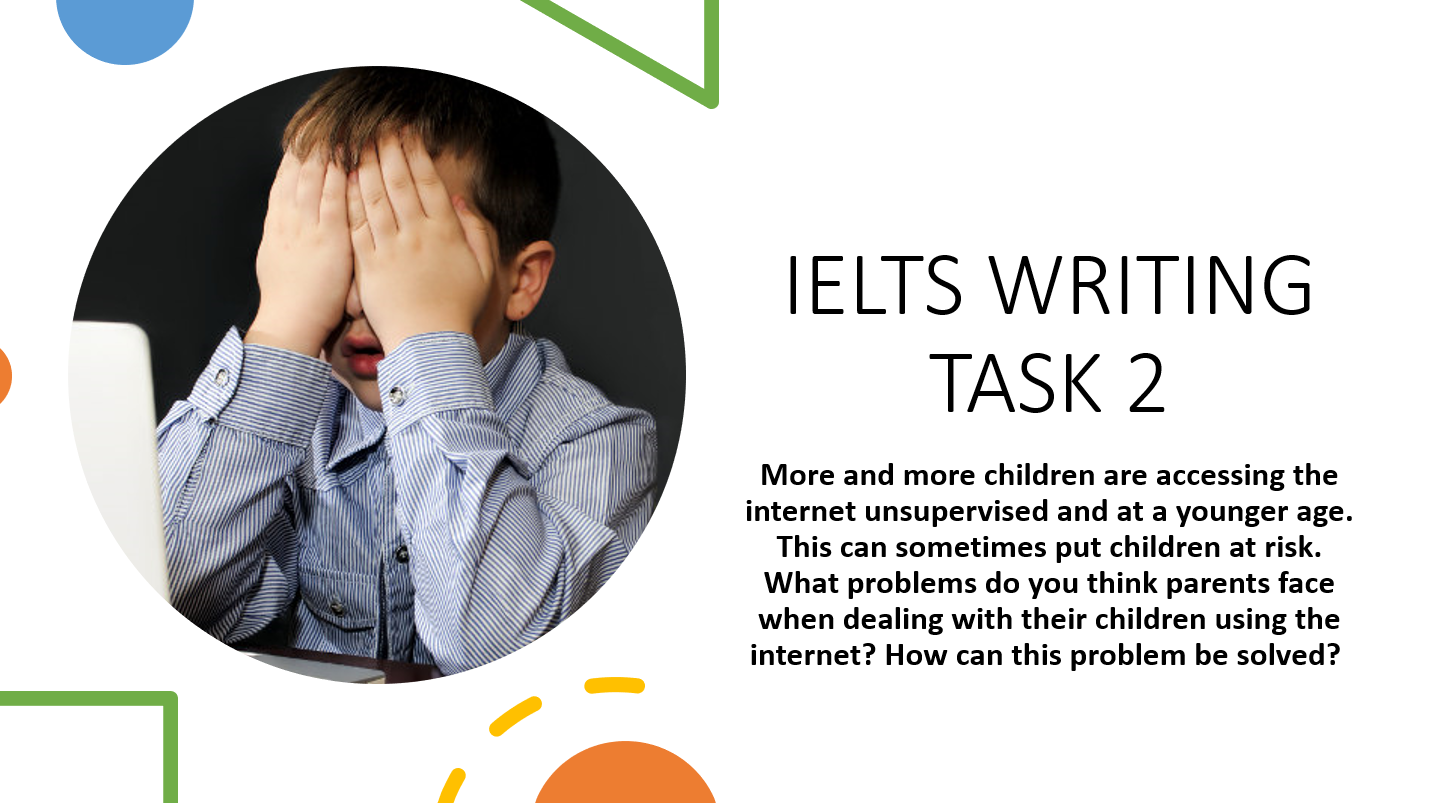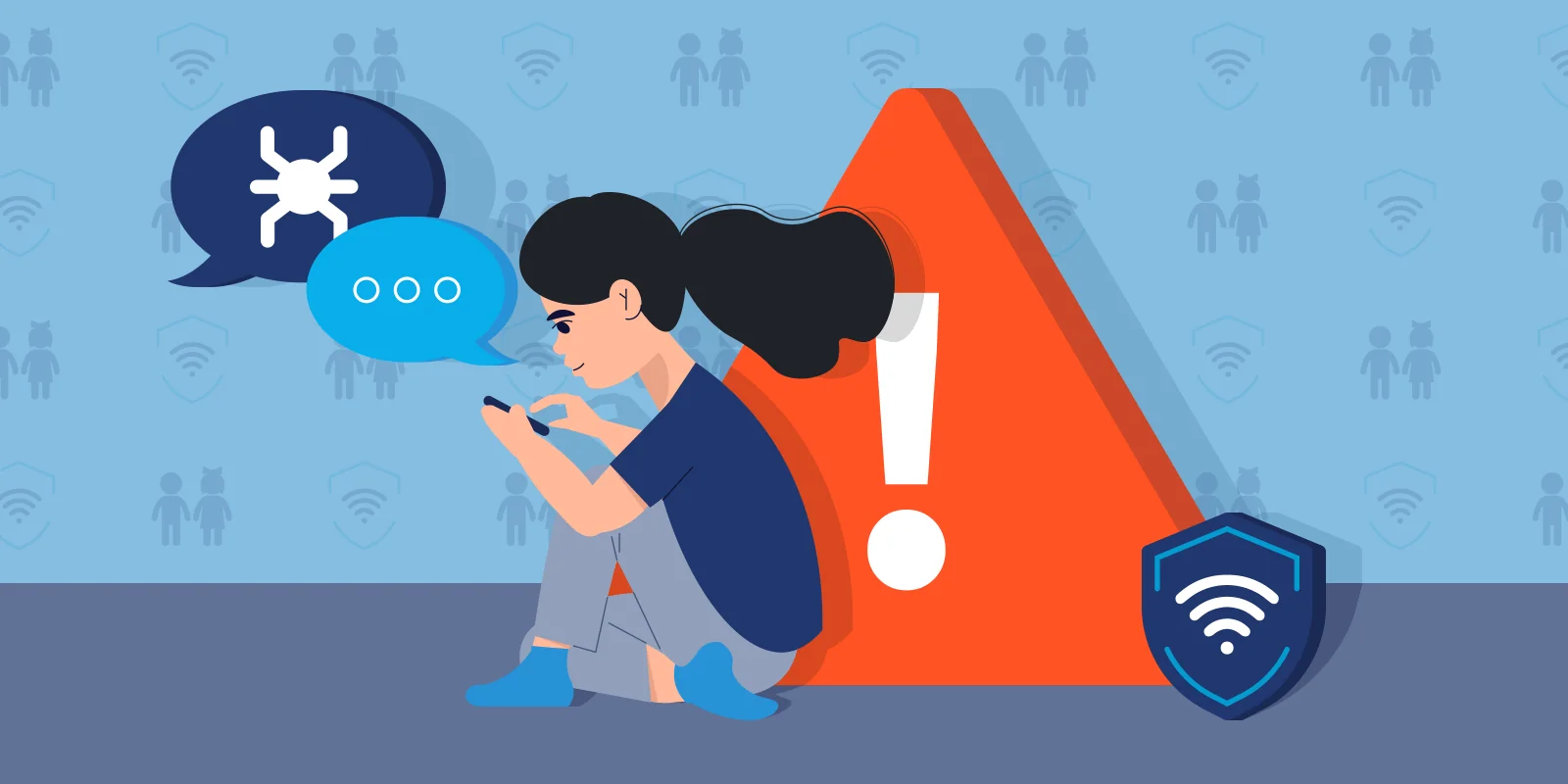Chào mọi người, Hà English rất vui được chia sẻ với các bạn một bài mẫu IELTS Writing Task 2 trên chủ đề “Technology” – bài viết đồng tình/không đồng tình. Trong bài viết này, Hà English sẽ giúp bạn hiểu rõ cách viết một bài luận Task 2 với câu hỏi “More and more children are accessing the internet unsupervised and at a younger age. This can sometimes put children at risk. What problems do you think parents face when dealing with their children using the internet? How can this problem be solved?”
Chúng ta sẽ phân tích các vấn đề mà phụ huynh đối mặt khi con cái sử dụng internet và đề xuất một số giải pháp để giải quyết vấn đề này. Hãy cùng chúng tôi bắt đầu khám phá cuộc tranh luận này và xem bạn nghĩ sao về vai trò của phụ huynh trong việc quản lý sử dụng internet của trẻ em.

Mục lục
Đề bài:
More and more children are accessing the internet unsupervised and at a younger age. This can sometimes put children at risk. What problems do you think parents face when dealing with their children using the internet? How can this problem be solved?
Các bước làm bài IELTS Writing Task 2 dành cho đề bài trên
Step 1: Understand our Task
Our task revolves around the increasing trend of children accessing the internet without supervision and at a younger age, which can potentially expose them to various risks. We need to identify the problems parents face in managing their children’s internet usage and propose effective solutions.
Bước 1: Hiểu rõ nhiệm vụ của chúng ta
Nhiệm vụ của chúng ta xoay quanh xu hướng tăng của việc trẻ em truy cập internet mà không có sự giám sát và ở độ tuổi càng trẻ, điều này có thể tiềm ẩn các rủi ro khác nhau. Chúng ta cần xác định các vấn đề mà các bậc phụ huynh đang phải đối mặt trong việc quản lý việc sử dụng internet của con cái họ và đề xuất các giải pháp hiệu quả.
Step 2: Decide our Position
To address this issue convincingly, we will emphasize the problems parents encounter and provide practical solutions to ensure children’s safe and responsible internet use.
Bước 2: Quyết định quan điểm của chúng ta
Để giải quyết vấn đề này một cách thuyết phục, chúng tôi sẽ nhấn mạnh các vấn đề mà các bậc phụ huynh đang gặp phải và đưa ra các giải pháp thực tế để đảm bảo sử dụng internet của trẻ em an toàn và có trách nhiệm.
Step 3: Extend our Answer
Problems Parents Face:
- Inadequate Supervision: Parents struggle to monitor their child’s online activities effectively, given the vastness of the internet and its constant evolution.
- Exposure to Inappropriate Content: Children can inadvertently stumble upon explicit or harmful content, which may negatively impact their development.
- Cyberbullying: Parents may not be aware of their child being victims or perpetrators of cyberbullying, as it often occurs in hidden online spaces.
- Privacy Concerns: Children may unknowingly share personal information, posing risks to their privacy and safety.
- Addiction: Excessive screen time can lead to internet addiction, affecting a child’s academic performance and mental health.
Solutions:
- Open Communication: Establishing a healthy dialogue with children about internet safety is essential. Parents should explain the potential risks and encourage them to report any uncomfortable online encounters.
- Parental Controls: Utilizing parental control software or built-in device settings allows parents to restrict access to inappropriate websites and set screen time limits.
- Educational Initiatives: Schools and communities should offer internet safety programs, equipping children with the knowledge and skills to navigate the online world safely.
- Leading by Example: Parents can model responsible internet use, demonstrating the importance of balance between online and offline activities.
- Online Etiquette: Teach children about online manners and the consequences of cyberbullying, promoting empathy and respect.
Bước 3: Mở rộng câu trả lời của chúng ta
Các vấn đề mà các bậc phụ huynh đối mặt:
- Sự giám sát không đủ: các bậc phụ huynh gặp khó khăn trong việc theo dõi các hoạt động trực tuyến của con cái một cách hiệu quả, do sự rộng lớn của internet và sự tiến triển liên tục của nó.
- Tiếp xúc với nội dung không thích hợp: trẻ em có thể tình cờ xem nội dung khiêu dâm hoặc có hại, có thể ảnh hưởng tiêu cực đến sự phát triển của họ.
- Quấy rối trực tuyến: phụ huynh có thể không nhận biết được con cái mình là nạn nhân hoặc người thực hiện việc quấy rối trực tuyến, vì nó thường xảy ra ở các không gian trực tuyến ẩn.
- Mối lo ngại về quyền riêng tư: trẻ em có thể không biết rằng họ đang chia sẻ thông tin cá nhân, gây ra rủi ro về quyền riêng tư và an toàn của họ.
- Nghiện: thời gian dành trên màn hình quá mức có thể dẫn đến sự nghiện internet, ảnh hưởng đến thành tích học tập và tâm lý của trẻ.
Các giải pháp:
- Giao tiếp mở cửa: thiết lập một cuộc trò chuyện lành mạnh với trẻ em về an toàn trên internet rất quan trọng. Phụ huynh nên giải thích về các rủi ro tiềm ẩn và khuyến khích họ báo cáo bất kỳ sự gặp gỡ trực tuyến không thoải mái nào.
- Kiểm soát của phụ huynh: sử dụng phần mềm kiểm soát của phụ huynh hoặc cài đặt trên thiết bị cho phép phụ huynh hạn chế truy cập vào các trang web không thích hợp và thiết lập giới hạn thời gian trên màn hình.
- Các sáng kiến về giáo dục: trường học và cộng đồng nên cung cấp các chương trình an toàn trực tuyến, trang bị cho trẻ em kiến thức và kỹ năng để duyệt qua thế giới trực tuyến một cách an toàn.
- Làm gương mẫu: phụ huynh có thể hình mẫu sử dụng internet có trách nhiệm, thể hiện sự quan trọng của sự cân bằng giữa hoạt động trực tuyến và hoạt động ngoài trời.
- Phép lịch sự trực tuyến: dạy trẻ em về lối sống lịch sự trực tuyến và hậu quả của việc quấy rối trực tuyến, thúc đẩy lòng đồng cảm và tôn trọng.

Full Sample Essay
Introduction
In an era dominated by technology, the internet has become an integral part of children’s lives. However, the increasing trend of unsupervised internet access at a younger age poses significant challenges for parents. This essay will delve into the problems parents face when dealing with their children’s internet use and propose effective solutions to ensure their safety and responsible online behavior.
Body Paragraph 1
One of the foremost challenges parents encounter is inadequate supervision. The vastness of the internet, coupled with its ever-evolving nature, makes it difficult for parents to keep tabs on their children’s online activities. This lack of oversight can lead to children stumbling upon explicit or harmful content, exposing them to developmental risks. Furthermore, without proper guidance, children may inadvertently share personal information, putting their privacy and safety in jeopardy. To address these issues, open communication between parents and children is paramount. Establishing a healthy dialogue allows parents to explain potential online risks and encourages children to report uncomfortable encounters.
Body Paragraph 2
Another pressing issue is cyberbullying, which often occurs in hidden online spaces, making it challenging for parents to detect. Children may be victims or perpetrators of cyberbullying without their parents’ knowledge, causing emotional distress and potential harm. To combat cyberbullying, parental control software and device settings can be employed to restrict access to harmful websites and set screen time limits. Simultaneously, educational initiatives in schools and communities can equip children with the knowledge and skills needed to navigate the online world safely and responsibly. Moreover, teaching online etiquette fosters empathy and respect, reducing the prevalence of cyberbullying.
Conclusion
In conclusion, parents indeed face a myriad of challenges when dealing with their children’s internet use, including inadequate supervision, exposure to inappropriate content, cyberbullying, privacy concerns, and addiction. However, through open communication, parental controls, education, leading by example, and instilling online etiquette, these problems can be effectively addressed. It is essential for parents to take proactive steps in ensuring their children’s safe and responsible internet use to safeguard their well-being in this digital age.
Vocabulary and Phrases:
- Inadequate Supervision: Giám sát không đủ
- Exposure to Inappropriate Content: Tiếp xúc với nội dung không thích hợp
- Cyberbullying: Nguy cơ bị tấn công trực tuyến
- Privacy Concerns: Lo ngại về quyền riêng tư
- Addiction: Sự nghiệp công nghệ
- Parental Controls: Kiểm soát của cha mẹ
- Open Communication: Giao tiếp mở cửa
- Online Etiquette: Phép xử trực tuyến
- Leading by Example: Dẫn đầu bằng ví dụ
- Educational Initiatives: Sáng kiến giáo dục
Xem thêm các bài viết IELTS Writing Task 2 khác TẠI ĐÂY
Tổng kết
Qua bài viết này, chúng ta đã thấy rằng việc trẻ em truy cập internet mà không được giám sát có thể mang lại nhiều rủi ro. Phụ huynh đối mặt với các vấn đề như sự an toàn trực tuyến, thời gian dành cho mạng, và sự ảnh hưởng đến sức khỏe tinh thần của con cái.
Tuy nhiên, có nhiều cách để giải quyết vấn đề này, bao gồm sự giám sát thường xuyên, giáo dục về an toàn trực tuyến, và thiết lập giới hạn thời gian sử dụng internet. Quan trọng nhất là phụ huynh và trẻ em cần có sự đối thoại và hiểu biết để cùng nhau tạo ra một môi trường an toàn trên internet.
Nếu bạn đang tìm kiếm một trung tâm Anh ngữ uy tín và chất lượng, Hà English là một sự lựa chọn tuyệt vời. Với hơn 10 năm kinh nghiệm trong lĩnh vực giảng dạy tiếng Anh, trung tâm đã đạt được uy tín cao trong việc đào tạo học viên về ngoại ngữ.

Hà English tự hào là một môi trường học tập chuyên nghiệp và thân thiện, với đội ngũ giáo viên có trình độ cao và giàu kinh nghiệm. Những giảng viên tại trung tâm không chỉ sở hữu kiến thức chuyên môn vững vàng mà còn có khả năng tạo động lực và sự hứng thú trong quá trình học tập của học viên.
Dạy từ tâm – nâng tầm tri thức
Nhận tư vấn lộ trình ngay!
